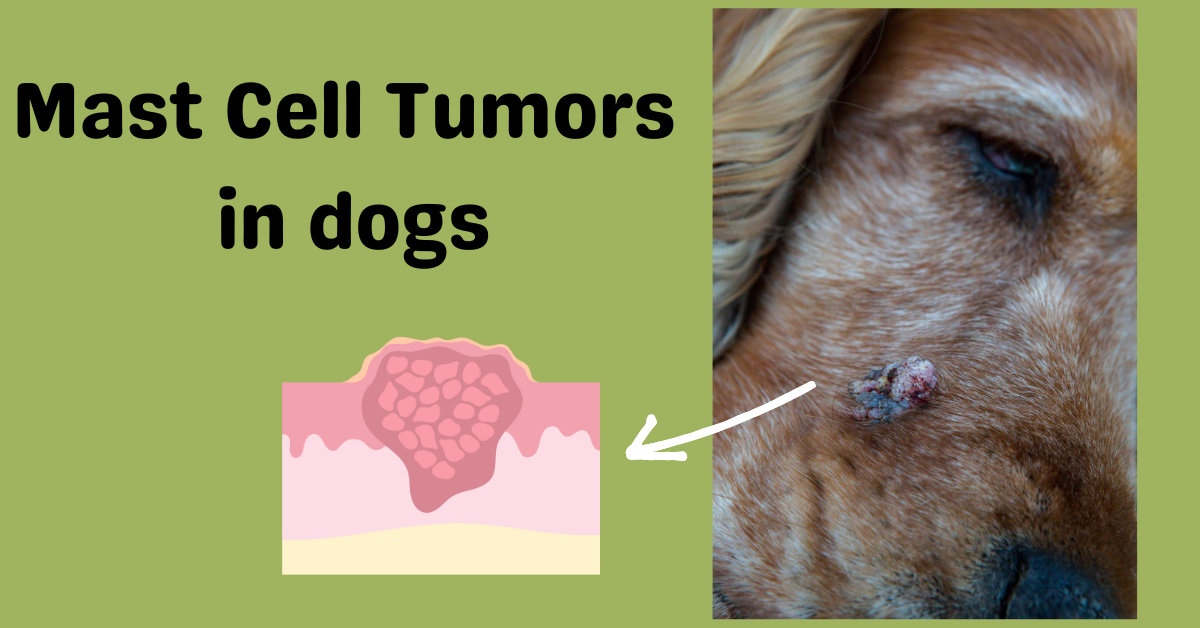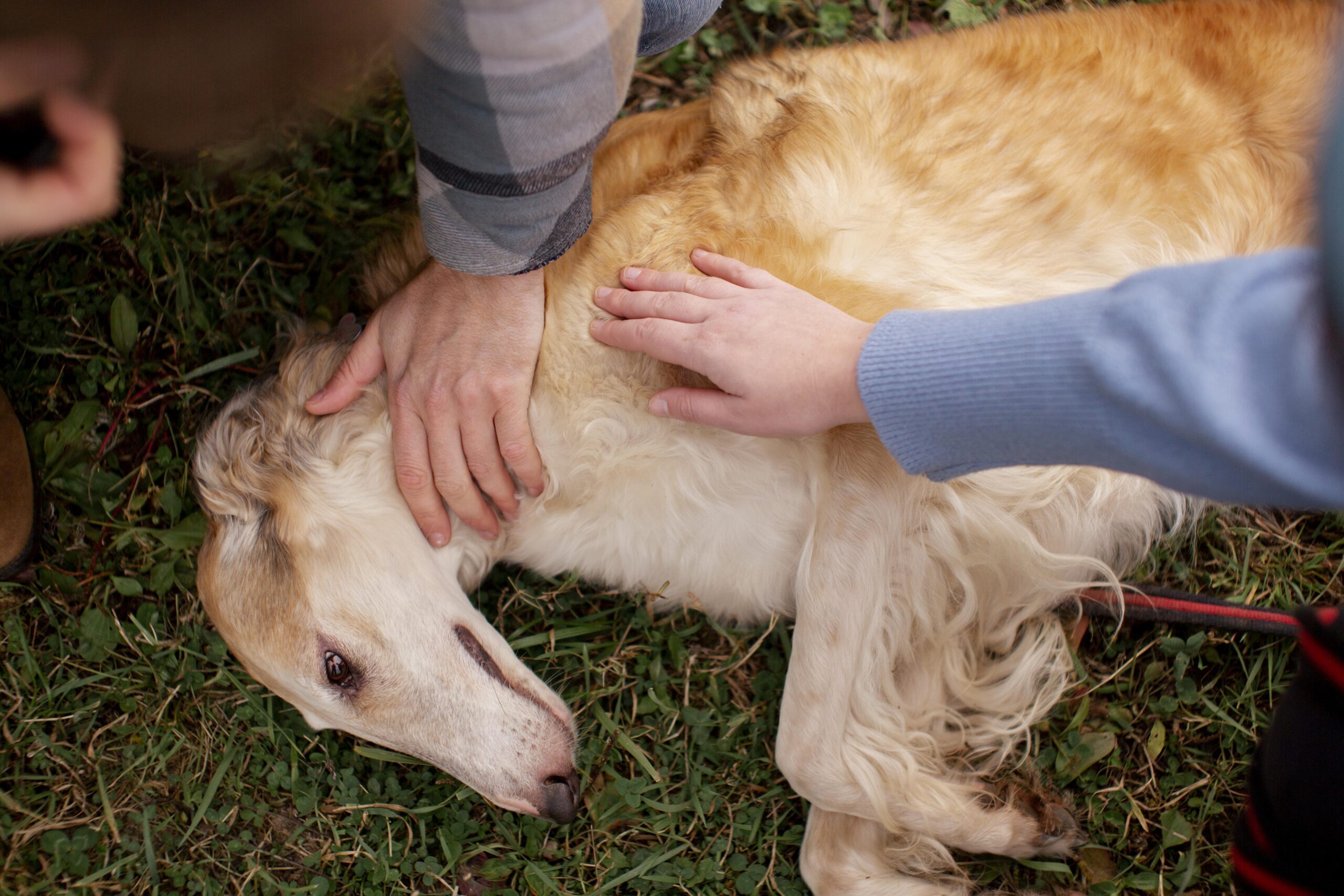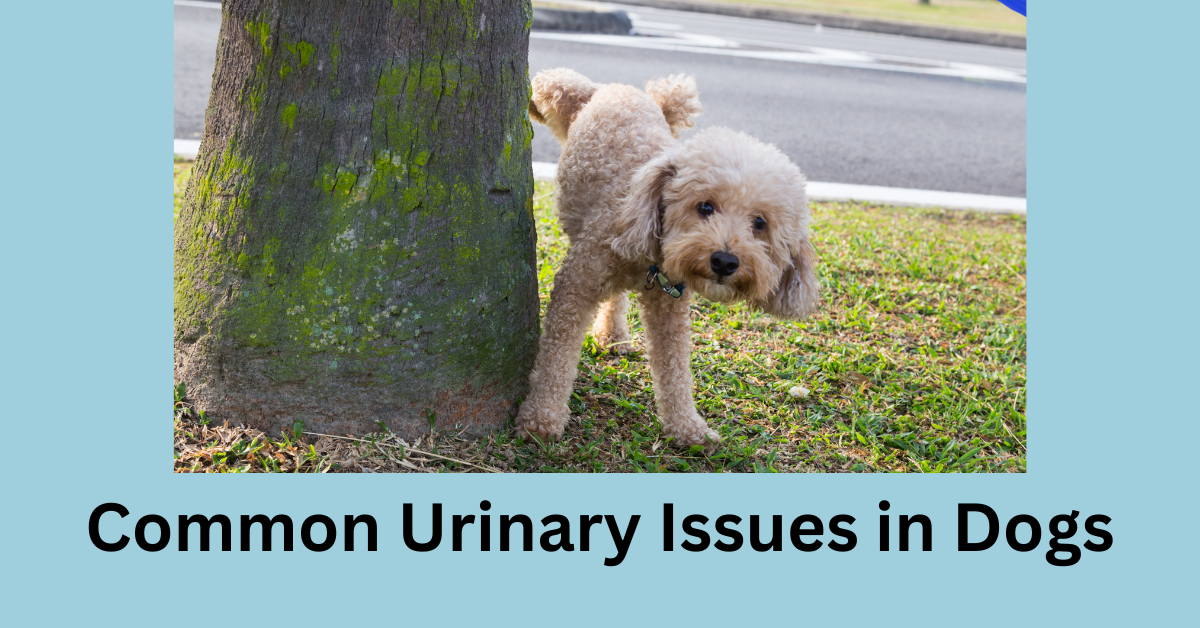Mast cell tumors are the most common type of tumor in dogs’ skin. Mast cells are white blood cells embedded in large quantities within various tissues and organs. These originate from these cells, when it starts dividing uncontrollably, forming tumors that can often be mistaken for benign skin lesions like warts.
Mast cell tumors can be of mixed appearance and variable in size, shape, and location. Overall, mast cell tumors are firm, solitary, and slow-growing. Some mast cell tumors can trigger severe allergic reactions in dogs, termed anaphylactic reactions.

Signs and Symptoms of Mast Cell Tumors
Mast cell tumors may not give rise to any specific symptoms. Periodic checking of your dog for the presence of any unusual masses or any changes in previously existing ones is always suggested. Common signs and symptoms of mast cell tumors may be:
- New skin tumors
- Changes in quantity in terms of size, texture, or color of a particular mass
- Unexplained hives or allergic reactions
- Swollen, red, or covered in so
Reliant on: – The degranulation, where the tumor releases inflammatory materials, may generate variability in size within the cancer throughout the day
Severe symptoms that might indicate a more advanced tumor include:
- Weakness
- Nausea and vomiting
- Diarrhea
- Swelling of the face and extremities
- Collapse or in rare instances, sudden death
Causes and Risk Factors
Although the real cause of mast cell tumors cannot be pinned down, it is thought to be a combination of genetic susceptibility and environmental influence. A mutation in the c-kit protooncogene receptor on the surface of mast cells predominantly occurs. The following breeds appear to be more predisposed to mast cell tumors than others:
- Boxers
- Pugs
- Pit Bull Terriers
- Boston Terriers
- Bulldogs
- Retrievers (e.g., Golden Retrievers
- Rhodesian Ridgebacks
- Bullmastiffs
- Weimaran
- Schnauzers

Mast Cell Tumor Diagnostics
Mast cell tumors are usually diagnosed by fine needle aspiration (FNA) of the mass in question and microscopical evaluation of cells collected. This is an easily performed and valuable diagnostic test, as mast cells are usually easily recognized under the microscope. A biopsy may be advised in more suspicious cases.
Other diagnostic tests should include lymph node aspirates, X-rays, blood work, and abdominal ultrasounds to ascertain the calibration of the invasion of cancer into other organs.
Grading and Staging
Grading and staging of mast cell tumors help to establish the behavior of the cancer and the spread of the cancer itself. Low-grade tumors are less likely to metastasize and recur, whereas high-grade tumors are more abhorrent in nature. Staging involves the assessment of how far the cancer has gone; stages zero and one indicate no spread, and higher stages indicate more metastasis.
Treatment Options
The treatment will depend on the grade and stage of the tumor. Treatment options include:
- Surgery: The tumors have not spread when the first instance usually consists of surgical removal.
- Chemotherapy: It is used when the tumor is of high grade or has spread into other areas as cancer.
- Radiation therapy: Will be considered in case surgery cannot be done due to the size or site of the tumor.
Management and Recovery
The post-surgical recovery would generally involve some rest, adequate pain management, and observation for around two weeks, during which recurrence of the swelling or any other complication can be observed. High-grade tumors might need further treatments like chemotherapy or radiation. Regular follow-up visits to the veterinarian are essential in such circumstances.
Prevention and Early Detection
Mast cell tumors are difficult to prevent because of their genetic determination in most cases. The best approach will probably be early detection with regular physical exams and monitoring for any new or changing masses.

Frequently Asked Questions
Q. When should I consider forgoing treatment of mast cell tumors? –
Sometimes, you may decide to stop treatment depending on the quality of life of your dog. Keep a balance sheet of days when things are going well compared to bad days, evaluating overall general well-being and enjoyment. If the bad ones are more than the good ones, then it’s time to think about other options.
Q. What is the difference between a mast cell tumor and a histiocytoma?
Mast cell tumors are composed of mast cells and may be aggressive, whereas histiocytomas will usually spontaneously regress over a few months.
Q. How expensive is it to remove a mast cell tumor?
Surgical removal costs range from $500 to $1,500, and diagnostic costs could be added in the hundreds or thousands, depending on the region and whether the procedure is done by a general or specialty veterinarian. Understanding mast cell tumors can help pet owners decide what to do with their dog’s life and health care options. Regular check-ups at the vet and early detection are primary steps in managing this common cancer in dogs.
References
London, C. A., & Seguin, B. (2003). Mast cell tumors in the dog. Veterinary Clinics: Small Animal Practice, 33(3), 473-489.
Misdorp, W. (2004). Mast cells and canine mast cell tumours. A review. Veterinary quarterly, 26(4), 156-169.
Govier, S. M. (2003). Principles of treatment for mast cell tumors. Clinical techniques in small animal practice, 18(2), 103-106.





